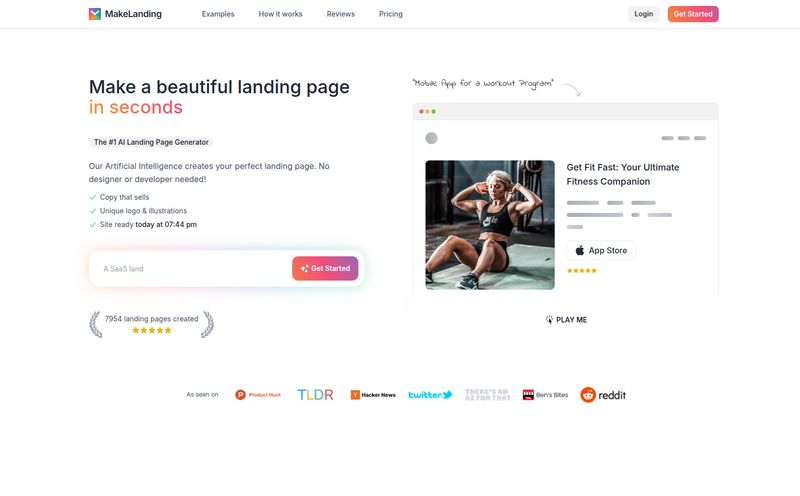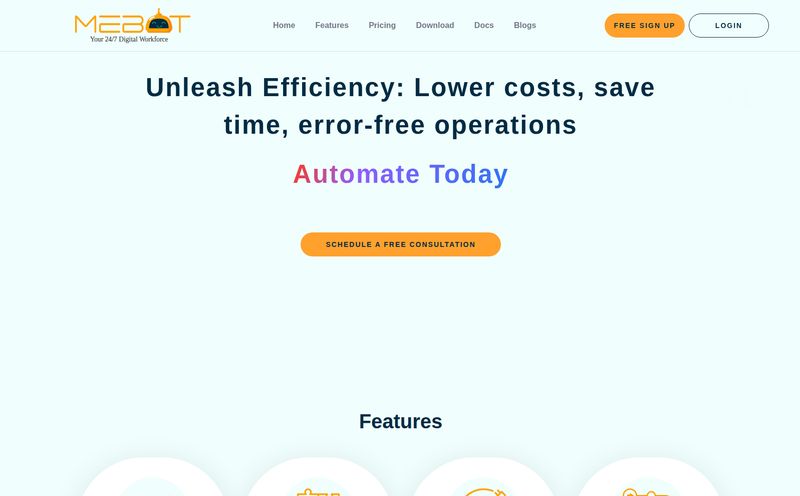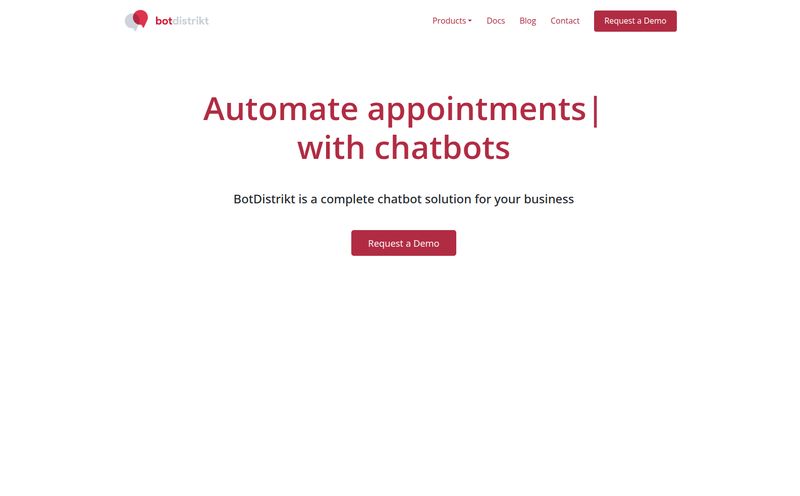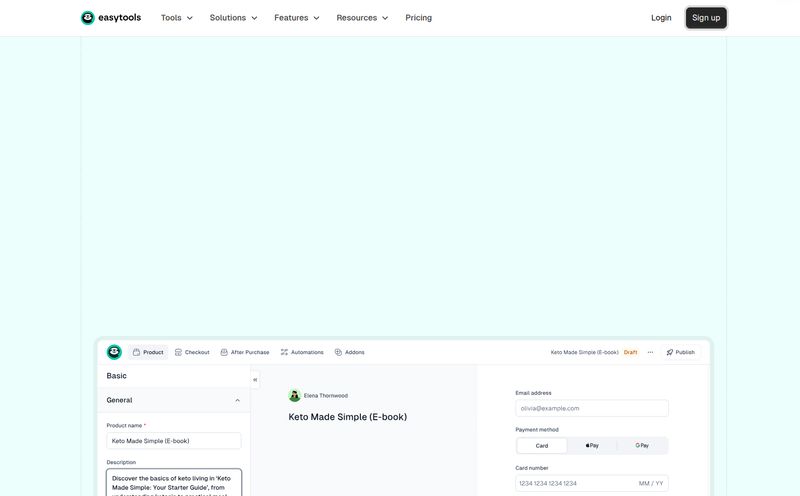The idea of building a new website can bring on a mild sweat. For years, your options were pretty stark: either you shelled out thousands of dollars for a web developer, or you braced yourself for a weekend-long (and often longer) battle with a drag-and-drop builder like Wix or Squarespace. The first option hurts the wallet, the second one... well, it can hurt your soul.
I’ve been in the SEO and digital marketing game for years, and I’ve seen countless clients and friends get stuck in this exact spot. They have a brilliant idea for a business, a blog, or a portfolio, but the technical wall to get it online is just too high. So when a tool like Chariot comes along, promising to build you a website from a simple conversation, my ears perk up. It sounds almost too good to be true, right? An AI web developer that you just… talk to?
So, I did what any curious (and slightly skeptical) digital pro would do. I took it for a spin. For science. And for you, of course. Here’s what I found.
What is Chariot, Anyway?
At its core, Chariot isn't just another website template library. It claims to be an “AI web developer.” The big idea is that instead of clicking, dragging, and wrestling with spacing and alignment, you simply describe what you want in plain English. Think of it less like being a construction worker and more like being an architect describing your vision to a team of hyper-efficient robot builders.
The whole process is boiled down to three simple steps:
- Describe your website: You start a chat and tell the AI what your site is about. “I need a website for my new bakery in Austin, specializing in sourdough bread and custom cakes.”
- Review and refine: The AI whips up a design and structure. You can then ask for changes. “Make the colors more earthy,” or “Add a gallery for my cake photos.”
- Publish instantly: Once you’re happy, you click a button and your site is live. Just like that.
This fundamentally changes the game from “learning a tool” to “having a conversation.” It’s a pretty bold claim.
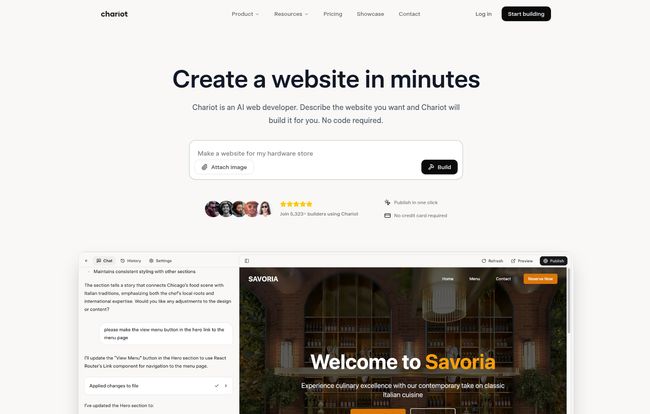
Visit Chariot
Taking Chariot for a Test Drive: My First Build
To really see what this thing could do, I decided to create a simple portfolio site. My prompt was something like: “I need a sleek, modern website for a freelance photographer named ‘Alex Ray’. I want a homepage with a big hero image, a portfolio gallery page, an about me page, and a contact form. The vibe should be minimalist and professional with a dark theme.”
I hit send and waited. A few moments later, Chariot presented a surprisingly solid first draft. It had the dark theme, a placeholder for a hero image, and the pages I asked for. Was it perfect? No. The placeholder text was a bit generic, and I wanted the gallery layout to be a bit different.
But here’s where the magic happened. Instead of hunting through menus, I just typed: “Change the headline to ‘Capturing Moments, Telling Stories’. In the portfolio, make it a three-column grid. Also, add a small section on the about page for my client testimonials.”
And it did it. The ability to iterate through conversation is genuinely impressive. It felt less like work and more like a creative collaboration. The whole thing, from the initial prompt to a site I’d be comfortable publishing, took maybe 20 minutes. That’s just… wild.
Breaking Down Chariot’s Core Features
Beyond the conversational building, a few other things stood out to me as being particularly well-thought-out for their target user.
The AI Conversation is The Real Differentiator
This is the main event. It’s what separates Chariot from the Squarespaces of the world. Those platforms give you the tools; Chariot does the work with you. This dramatically lowers the barrier to entry. If you can send a text message or write an email, you have all the technical skills you need to get started. It’s a huge win for accessibility.
One-Click Publishing and Included Hosting
Anyone who's ever tried to point a domain name to a new server or fiddle with FTP clients knows the pain. Chariot completely removes that. When you’re ready, you hit publish. That's it. Your site is live on the internet. Hosting is included in the paid plans, which simplifies things immensely. You're not juggling a domain registrar, a hosting provider, and a website builder—it’s all under one roof.
Support for Custom Domains
This is a non-negotiable for any serious project. A `yourname.chariot.ai` subdomain is fine for a test, but for a business, you need `yourbusiness.com`. Chariot integrates this on their paid plans, which is exactly what you’d expect and need for a professional presence.
Who is Chariot For? (And Who Should Probably Look Elsewhere?)
No tool is perfect for everyone. As much as I like this conversational approach, it’s important to be realistic about its ideal use cases.
Chariot is a Dream Come True For:
- Small Business Owners: Plumbers, bakers, consultants, you name it. If you need a clean, professional “digital business card” to show legitimacy and generate leads, this is incredibly fast and affordable.
- Freelancers and Creatives: Photographers, writers, artists, and designers can get a portfolio up in minutes, not days.
- Side Hustlers & Solopreneurs: Testing a new business idea? You can have a landing page live before your coffee gets cold. It minimizes the risk and time investment.
- The Tech-Averse: Honestly, this is for anyone who hears the word “CSS” and immediately wants to take a nap.
Who Might Need a More Traditional Solution?
- Complex E-commerce Stores: If you need to manage hundreds of products with complex variations, shipping rules, and tax calculations, a dedicated platform like Shopify is still the king.
- The Control Freak Developer: If you’re the kind of person who wants to control every pixel, write your own JavaScript, and optimize every line of code, this isn’t for you. The whole point of Chariot is to give up that granular control for speed and simplicity.
- Large Companies with Rigid Brand Guidelines: If your brand has incredibly specific design systems and functional requirements, a custom-coded solution is likely still necessary.
The All-Important Question: Chariot's Pricing
Okay, let’s talk money. The speed is great, but is it affordable? The pricing structure is actually one of my favorite things about Chariot because it’s so clear and flexible. I've seen some SaaS pricing pages that look like a tax form... this one doesn't.
| Plan | Price | Key Features | Best For |
|---|---|---|---|
| Free | $0 / month | 75 credits per month, limited features. | Trying it out, seeing if the AI works for you. |
| Starter | $17 / month | 1,000 credits/month, custom domains, hosting, priority support. | Individuals, freelancers, and most small businesses. This is the sweet spot. |
| Pro | $47 / month | 2,500 credits/month, all Starter features, priority access to new AI models. | Larger websites, agencies, or power users who are constantly building. |
| Pay as you go | $1 / 50 credits | Purchase credits as needed, they never expire. | People who only need to make occasional updates or build one-off sites. |
The concept of “credits” is how they meter usage. A credit is likely used every time you ask the AI to generate or make a significant change. And that “Pay as you go” option? I love it. It feels fair and respects the user who might not need to make changes every single month. Big thumbs up for that flexibility.
The Potential Downsides (Let’s Be Real)
As excited as I am, it's not all sunshine and rainbows. You are handing over a lot of the creative and technical process to an AI. This means you might be limited in terms of hyper-specific customizations. If you have a very particular animation or a unique layout in mind, the AI might not be able to replicate it perfectly. You're working within the AI's creative sandbox, which is big, but it still has walls. This is the classic trade-off: you're sacrificing ultimate control for unprecedented speed and ease.
Conclusion: Is Chariot the Future of Making Websites?
So, is Chariot the magic bullet that will kill the web design industry? No, of course not. But that was never the point. What Chariot does, and does brilliantly, is democratize the process of getting online.
It removes the technical and financial barriers that have kept so many great ideas stuck in notebooks. For the vast majority of people and small businesses who just need a clean, professional, and functional website now, this is a game-changer. It’s not about replacing high-end developers; it's about empowering everyone else.
The age of fighting with confusing builders for a simple brochure site might just be over. And frankly, I say good riddance.
Frequently Asked Questions (FAQ)
How exactly do I get started with Chariot?
You just go to their website and start a chat. There’s a free plan, so you can literally describe the website you're thinking of and see what it creates without any commitment. The first step is just talking to the AI.
Can I use my own custom domain name?
Yes, absolutely. The ability to connect a custom domain (like `www.mycoolbakery.com`) is included in their paid plans (Starter and Pro), which is essential for creating a professional brand.
What are the Chariot credits actually used for?
While they don't list an exact conversion, credits are the currency you use to interact with the AI. Generating the initial site, asking for major revisions, creating new pages, or using advanced AI features will consume credits. The Pay-as-you-go option is great if you run out or just need to make a few tweaks.
Is a website built with Chariot good for SEO?
From an SEO perspective, the platform's job is to produce clean, modern, mobile-friendly code, which AI is generally pretty good at. Chariot seems to build sites that are fast and responsive, which Google loves. However, good SEO is still about your content, your keywords, and your strategy. Chariot gives you a great technical foundation, but you still need to put in the work on the content side to rank well.
Can I cancel my subscription at any time?
Yes, based on their FAQ and standard SaaS practices, you can manage and cancel your subscription. If you're on a monthly plan, you can cancel to avoid future charges.
What happens if I run out of credits on my plan?
If you use up your monthly credits, you have two options: you can either upgrade to a higher plan with more credits, or you can purchase extra credits through their flexible “Pay as you go” option. The best part is that purchased credits never expire.
